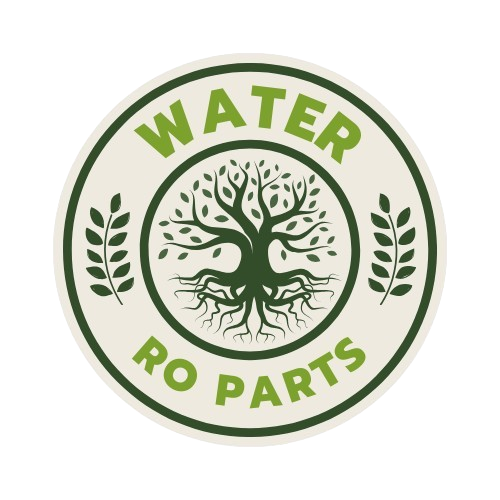Activated Carbon vs. Reverse Osmosis: Which Water Filter is Right for You?
In the United States, nearly 90% of households express concern about water quality. This statistic underscores the importance of clean drinking water and the methods we use to achieve it. Two of the most common filtration methods are activated carbon and reverse osmosis. Understanding how each works can guide you in selecting the best option for your water needs.
This article compares activated carbon and reverse osmosis water filters, highlighting their strengths and weaknesses to help you make an informed choice.
How Activated Carbon Filters Work
Adsorption Process Explained
Activated carbon filters use a process called adsorption to remove impurities from water. This involves attracting and binding contaminants to the surface of the carbon particles. Activated carbon is treated to create millions of tiny pores, significantly increasing its surface area. As water flows through, pollutants stick to these surfaces, effectively cleaning the water.
Types of Activated Carbon Filters
There are three main types of activated carbon filters:
- Block Filters: These filters consist of compressed carbon, providing a more efficient way to catch impurities due to the increased contact time with the water.
- Granular Filters: These have loose carbon granules, allowing water to flow freely but may not be as effective against all contaminants.
- Powdered Filters: Often used in municipal water treatment, these are effective but not typically suitable for home use.
Each type has its applications, making them suitable for different situations.
Effectiveness Against Specific Contaminants
Activated carbon filters excel at removing:
- Chlorine: Effectively reduces chlorine levels that cause taste and odor.
- Volatile Organic Compounds (VOCs): Removes harmful chemicals from water.
Limitations include:
- Heavy Metals: Not effective for lead or mercury removal.
- Salts: Inefficient in removing dissolved solids.
Study data indicates that activated carbon can remove over 90% of chlorine and 50-70% of VOCs.
Understanding Reverse Osmosis Filtration
The Reverse Osmosis Process
Reverse osmosis (RO) works by pushing water through a semipermeable membrane. This membrane allows water molecules to pass while blocking larger particles, including salts, heavy metals, and other contaminants. The process requires pressure to force water through the membrane, ensuring cleaner output.
Contaminant Removal Capabilities
RO systems are highly effective at removing a wide range of contaminants, such as:
- Heavy Metals: Lead, arsenic, and mercury.
- Dissolved Solids: Sodium and other minerals.
Rejection rates for contaminants can reach up to 99% for heavy metals and 95% for salts.
Water Waste and Other Considerations
One downside of reverse osmosis is the water waste associated with the filtration process. Traditional RO systems waste up to three gallons of water for every gallon filtered. However, newer water-saving models can reduce this waste significantly.
Activated Carbon vs. Reverse Osmosis: A Head-to-Head Comparison
Cost Comparison
- Initial Purchase Price: Activated carbon filters are generally cheaper than RO systems.
- Replacement Filter Costs: Activated carbon filters need replacement every 6-12 months, while RO membranes last 2-5 years but can be more costly.
- Maintenance Expenses: Long-term maintenance is crucial. Activated carbon may end up being more cost-effective due to lower replacement costs.
Filtration Effectiveness
| Contaminant | Activated Carbon (%) | Reverse Osmosis (%) |
|---|---|---|
| Chlorine | >90 | <1 |
| Heavy Metals (Lead) | <5 | >99 |
| Dissolved Solids (Salt) | <5 | >95 |
Data from independent labs supports these performance metrics.
Maintenance and Lifespan
- Activated Carbon Filters: Typically need replacement every 6-12 months, depending on usage.
- Reverse Osmosis Systems: Require replacement of pre-filters every 6 months, while the membrane lasts up to 2-5 years.
Choosing the Right Water Filter for Your Needs
Factors to Consider
Your choice of a water filter depends on several factors:
- Water Quality in Your Area: Test your water to understand the contaminants present.
- Budget: Consider both initial and long-term costs.
- Desired Level of Filtration: Determine what needs to be removed.
- Water Usage: Assess how much filtered water you need.
Best Use Cases for Activated Carbon Filters
- Improving Taste and Odor: Ideal for enhancing water flavor.
- Removing Chlorine: Highly effective for chlorinated water.
Best Use Cases for Reverse Osmosis Filters
- Removing Heavy Metals: Essential in areas with known contamination.
- Addressing High Levels of Dissolved Solids: Suitable for hard water or brackish sources.
Maintaining Your Water Filter System
Activated Carbon Filter Maintenance
- Schedule Replacements: Change filters according to the manufacturer’s guidelines.
- Regular Inspections: Check for any blockages or unusual changes in water taste.
Reverse Osmosis System Maintenance
- Clean the Membrane: Periodically sanitize the system to prevent fouling.
- Replace Filters: Stick to a schedule for pre-filters and post-filters.
Expert Advice
“Routine maintenance of your water filtration system is crucial for ensuring water quality. Both activated carbon and reverse osmosis systems require attention to keep working efficiently.” – Water Quality Expert
Conclusion:
Activated carbon and reverse osmosis are both effective water filtration methods, each with unique benefits. Understanding individual needs and local water quality is vital in selecting the right filter.
Consider what contaminants you need to reduce, your budget, and how much water you consume. This decision-making process will lead to a cleaner and healthier drinking water choice for you and your family.

